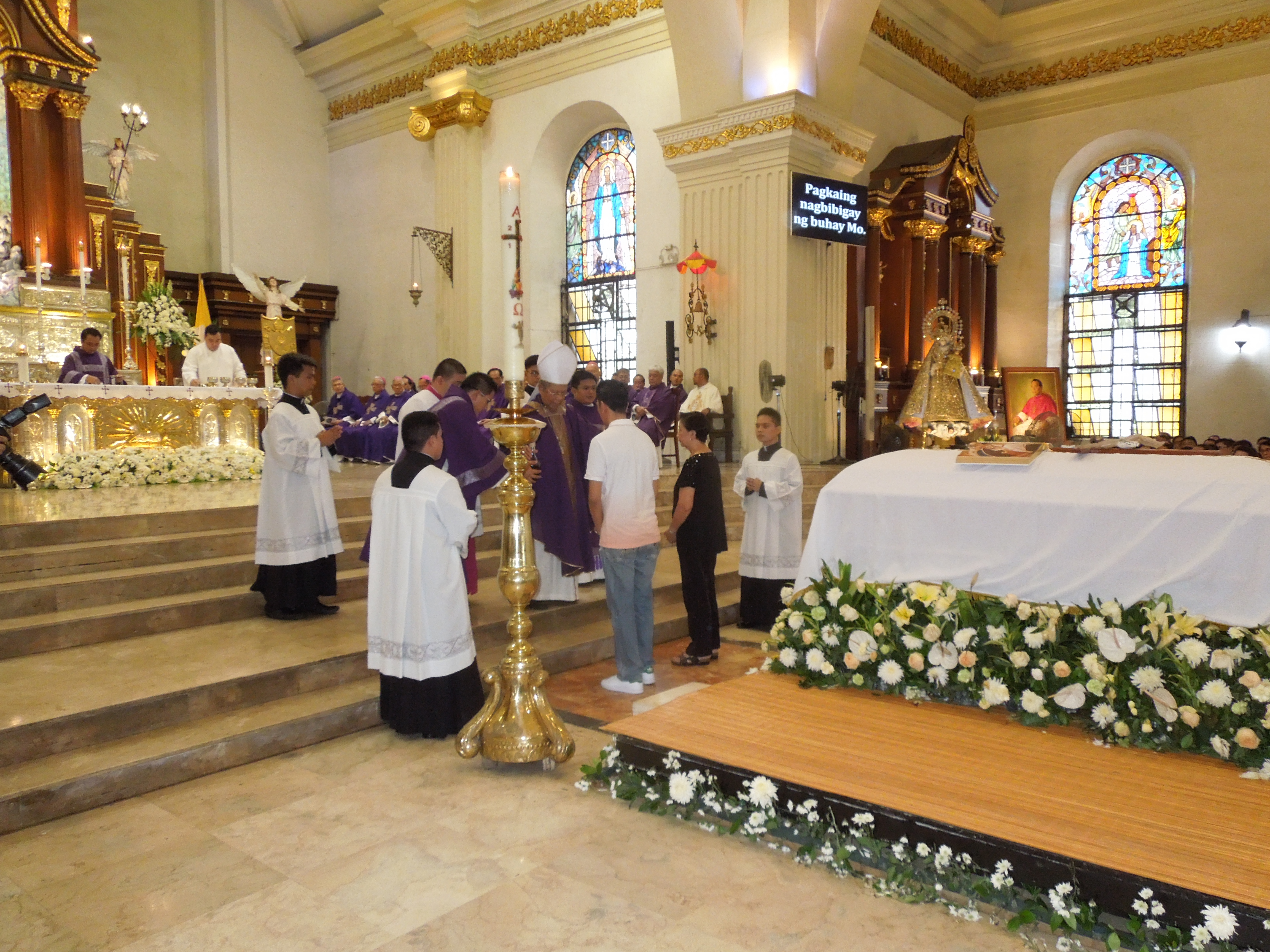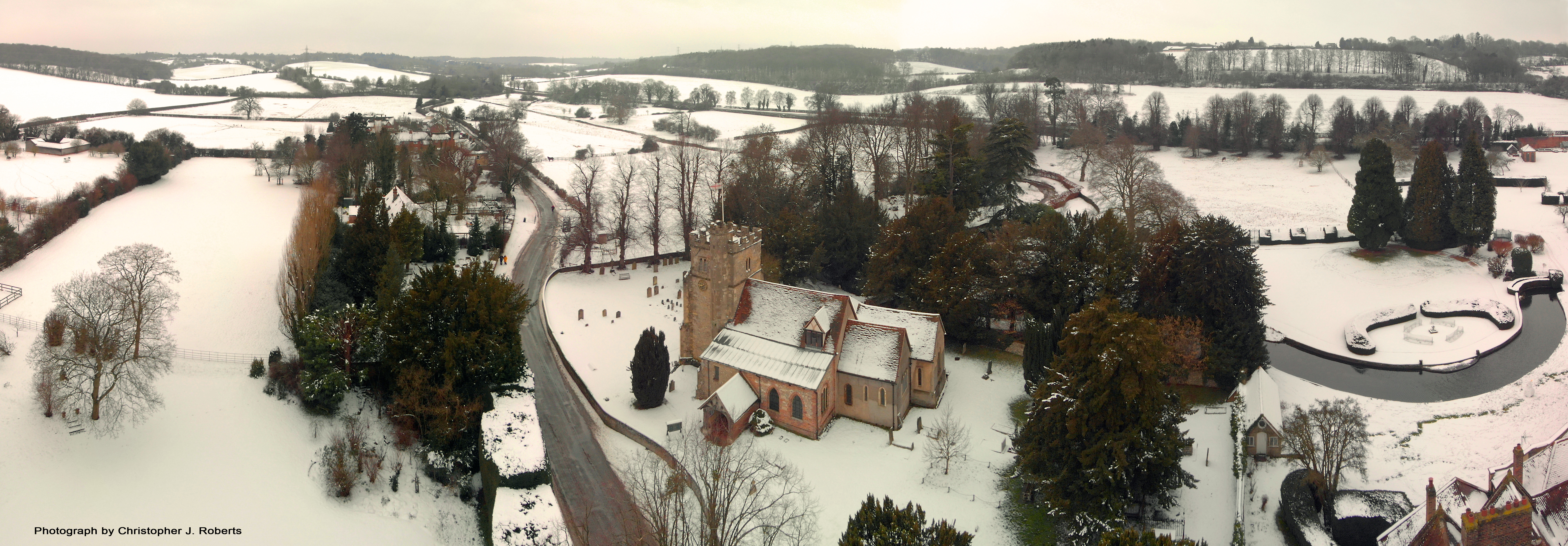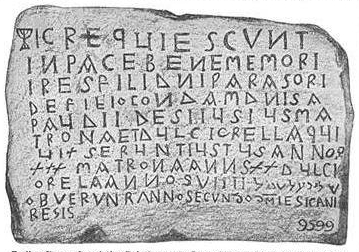|
A Celtic Requiem
''A Celtic Requiem (Requiem for Jenny Jones)'' is a requiem by the English composer John Tavener, written in 1969. It is written for soprano, children's choir and orchestra. Despite its title, the work is not actually a requiem for anyone in particular. Instead, it takes the rough format of a singing game for children. A character, Jenny Jones, is selected by the children who at one point dance around her to ward off evil spirits. According to the composer, this though handed down to children, has its origin in a funeral rite in the lowlands of Scotland.Liner notes to 1970 recording. The piece is composed in three sections which follow the traditional requiem: ' Requiem aeternam', ' Dies irae' and 'Requiescat in pace'. It was premiered by the London Sinfonietta and chorus under David Atherton in August 1969. Shortly afterward the BBC recorded it with the soprano June Barton and the children of Little Missenden Village School and the composer playing the organ. These forces then ... [...More Info...] [...Related Items...] OR: [Wikipedia] [Google] [Baidu] |
John Tavener
Sir John Kenneth Tavener (28 January 1944 – 12 November 2013) was an English composer, known for his extensive output of choral religious works. Among his best known works are '' The Lamb'' (1982), '' The Protecting Veil'' (1988), and ''Song for Athene'' (1993). Tavener first came to prominence with his cantata ''The Whale'', premiered in 1968. Then aged 24, he was described by ''The Guardian'' as "the musical discovery of the year", while ''The Times'' said he was "among the very best creative talents of his generation". During his career he became one of the best known and popular composers of his generation, most particularly for ''The Protecting Veil'', which as recorded by cellist Steven Isserlis became a best-selling album, and ''Song for Athene'' which was sung at the funeral of Princess Diana. ''The Lamb'' featured in the soundtrack for Paolo Sorrentino's film ''The Great Beauty''. Tavener was knighted in 2000 for his services to music and won an Ivor Novello Award. ... [...More Info...] [...Related Items...] OR: [Wikipedia] [Google] [Baidu] |
London Sinfonietta
The London Sinfonietta is an English contemporary chamber orchestra founded in 1968 and based in London. The ensemble has headquarters at Kings Place and is Resident Orchestra at the Southbank Centre. Since its inaugural concert in 1968—giving the world premiere of Sir John Tavener’s ''The Whale''—the London Sinfonietta's commitment to making new music has seen it commission over 300 works, and premiere many hundreds more. The core of the London Sinfonietta is its 18 Principal Players. In September 2013 the ensemble launched its Emerging Artists Programme. The London Sinfonietta's recordings comprise a catalogue of 20th-century classics, on numerous labels as well as the ensemble's own London Sinfonietta Label. Directors David Atherton and Nicholas Snowman founded the orchestra in 1968. Atherton was its first music director, from 1968 to 1973 and again from 1989 to 1991. Snowman was its general manager from 1968 to 1972. Michael Vyner served as the artistic directo ... [...More Info...] [...Related Items...] OR: [Wikipedia] [Google] [Baidu] |
Compositions By John Tavener
Composition or Compositions may refer to: Arts and literature *Composition (dance), practice and teaching of choreography *Composition (language), in literature and rhetoric, producing a work in spoken tradition and written discourse, to include visuals and digital space *Composition (music), an original piece of music and its creation *Composition (visual arts), the plan, placement or arrangement of the elements of art in a work * ''Composition'' (Peeters), a 1921 painting by Jozef Peeters *Composition studies, the professional field of writing instruction * ''Compositions'' (album), an album by Anita Baker *Digital compositing, the practice of digitally piecing together a video Computer science *Function composition (computer science), an act or mechanism to combine simple functions to build more complicated ones *Object composition, combining simpler data types into more complex data types, or function calls into calling functions History *Composition of 1867, Austro-Hungarian/ ... [...More Info...] [...Related Items...] OR: [Wikipedia] [Google] [Baidu] |
Apple Records Albums
An apple is an edible fruit produced by an apple tree (''Malus domestica''). Apple trees are cultivated worldwide and are the most widely grown species in the genus ''Malus''. The tree originated in Central Asia, where its wild ancestor, '' Malus sieversii'', is still found today. Apples have been grown for thousands of years in Asia and Europe and were brought to North America by European colonists. Apples have religious and mythological significance in many cultures, including Norse, Greek, and European Christian tradition. Apples grown from seed tend to be very different from those of their parents, and the resultant fruit frequently lacks desired characteristics. Generally, apple cultivars are propagated by clonal grafting onto rootstocks. Apple trees grown without rootstocks tend to be larger and much slower to fruit after planting. Rootstocks are used to control the speed of growth and the size of the resulting tree, allowing for easier harvesting. There are more ... [...More Info...] [...Related Items...] OR: [Wikipedia] [Google] [Baidu] |
Requiems
A Requiem or Requiem Mass, also known as Mass for the dead ( la, Missa pro defunctis) or Mass of the dead ( la, Missa defunctorum), is a Mass of the Catholic Church offered for the repose of the soul or souls of one or more deceased persons, using a particular form of the Roman Missal. It is usually celebrated in the context of a funeral (where in some countries it is often called a Funeral Mass). Musical settings of the propers of the Requiem Mass are also called Requiems, and the term has subsequently been applied to other musical compositions associated with death, dying, and mourning, even when they lack religious or liturgical relevance. The term is also used for similar ceremonies outside the Roman Catholic Church, especially in Western Rite Orthodox Christianity, the Anglo-Catholic tradition of Anglicanism, and in certain Lutheran churches. A comparable service, with a wholly different ritual form and texts, exists in the Eastern Orthodox and Eastern Catholic church ... [...More Info...] [...Related Items...] OR: [Wikipedia] [Google] [Baidu] |
Pipe Organ
The pipe organ is a musical instrument that produces sound by driving pressurized air (called ''wind'') through the organ pipes selected from a keyboard. Because each pipe produces a single pitch, the pipes are provided in sets called ''ranks'', each of which has a common timbre and volume throughout the keyboard compass. Most organs have many ranks of pipes of differing timbre, pitch, and volume that the player can employ singly or in combination through the use of controls called stops. A pipe organ has one or more keyboards (called '' manuals'') played by the hands, and a pedal clavier played by the feet; each keyboard controls its own division, or group of stops. The keyboard(s), pedalboard, and stops are housed in the organ's ''console''. The organ's continuous supply of wind allows it to sustain notes for as long as the corresponding keys are pressed, unlike the piano and harpsichord whose sound begins to dissipate immediately after a key is depressed. The smallest po ... [...More Info...] [...Related Items...] OR: [Wikipedia] [Google] [Baidu] |
Little Missenden
Little Missenden is a village and civil parish on the River Misbourne in Buckinghamshire, England. It is in the Chiltern Hills, about southeast of Great Missenden and west of Amersham. The village lies on the River Misbourne in the Misbourne valley. The parish includes the villages of Holmer Green, Hyde Heath and Little Kingshill, and the hamlets of Beamond End, Brays Green, Mop End and Spurlands End. The 2011 Census recorded the population of the ward of Little Missenden, which includes Hyde Heath and Little Kingshill, as 2,234, albeit those other two villages in the ward are each larger than Little Missenden itself. The population of the entire parish was estimated as 6,490 in 2017, reflecting the inclusion of the much larger Holmer Green within the parish. The main London – Aylesbury road used to run through the centre of Little Missenden and past the two pubs – The Red Lion and The Crown. Early in the 19th century a new by-pass road was built to the north and this ... [...More Info...] [...Related Items...] OR: [Wikipedia] [Google] [Baidu] |
June Barton
June is the sixth month of the year in the Julian and Gregorian calendars and is the second of four months to have a length of 30 days, and the third of five months to have a length of less than 31 days. June contains the summer solstice in the Northern Hemisphere, the day with the most daylight hours, and the winter solstice in the Southern Hemisphere, the day with the fewest daylight hours (excluding polar regions in both cases). June in the Northern Hemisphere is the seasonal equivalent to December in the Southern Hemisphere and vice versa. In the Northern Hemisphere, the beginning of the traditional astronomical summer is 21 June (meteorological summer begins on 1 June). In the Southern Hemisphere, meteorological winter begins on 1 June. At the start of June, the sun rises in the constellation of Taurus; at the end of June, the sun rises in the constellation of Gemini. However, due to the precession of the equinoxes, June begins with the sun in the astrological sign of G ... [...More Info...] [...Related Items...] OR: [Wikipedia] [Google] [Baidu] |
David Atherton
David Atherton (born 3 January 1944) is an English conductor and founder of the London Sinfonietta. Background Atherton was born in Blackpool, Lancashire into a musical family. He was educated at Blackpool Grammar School. His father, Robert Atherton, was the Music Master at St Joseph's College, Blackpool and was also a conductor. His mother was a singer. Atherton studied music at Fitzwilliam College at the University of Cambridge. Career In 1967 Atherton was founder of the London Sinfonietta and, as its Music Director, a position he held until 1973, gave the first performance of many important contemporary works. It is now widely regarded as one of the world's leading chamber orchestras. Also in 1967 he was invited to join the music staff of the Royal Opera House, Covent Garden, by Sir Georg Solti. In 1968 he became the youngest conductor ever to appear there, conducting ''Il trovatore''. He spent twelve years as Resident Conductor, giving over 150 performances. Also in ... [...More Info...] [...Related Items...] OR: [Wikipedia] [Google] [Baidu] |
Requiescat In Pace
Rest in peace (RIP), a phrase from the Latin (), is sometimes used in traditional Christian services and prayers, such as in the Catholic, Lutheran, Anglican, and Methodist denominations, to wish the soul of a decedent eternal rest and peace. It became ubiquitous on headstones in the 18th century, and is widely used today when mentioning someone's death. Description The phrase ''dormit in pace'' (English: " esleeps in peace") was found in the catacombs of the early Christians and indicated that "they died in the peace of the Church, that is, united in Christ." The abbreviation R.I.P., meaning ''Requiescat in pace'', "Rest in peace", continues to be engraved on the gravestones of Christians, especially in the Catholic, Lutheran, and Anglican denominations. In the Tridentine Requiem Mass of the Catholic Church the phrase appears several times. Other variations include "Requiescat in pace et in amore" for " ay he/sherest in peace and love", and "In pace requiescat et in amore" ... [...More Info...] [...Related Items...] OR: [Wikipedia] [Google] [Baidu] |
Apple Records
Apple Records is a record label founded by the Beatles in 1968 as a division of Apple Corps Ltd. It was initially intended as a creative outlet for the Beatles, both as a group and individually, plus a selection of other artists including Mary Hopkin, James Taylor, Badfinger, and Billy Preston. In practice, the roster had become dominated by the mid-1970s with releases of the former Beatles as solo artists. Allen Klein managed the label from 1969 to 1973, then it was managed by Neil Aspinall on behalf of the Beatles and their heirs. Aspinall retired in 2007 and was replaced by Jeff Jones. History 1967–1969: Early years Apple Corps Ltd was conceived by the Beatles in 1967 after the death of their manager Brian Epstein. It was intended to be a small group of companies (Apple Retail, Apple Publishing, Apple Electronics, and so on) as part of Epstein's plan to create a tax-effective business structure. The first project that the band released after forming the company was th ... [...More Info...] [...Related Items...] OR: [Wikipedia] [Google] [Baidu] |

.jpg)



.jpg)

